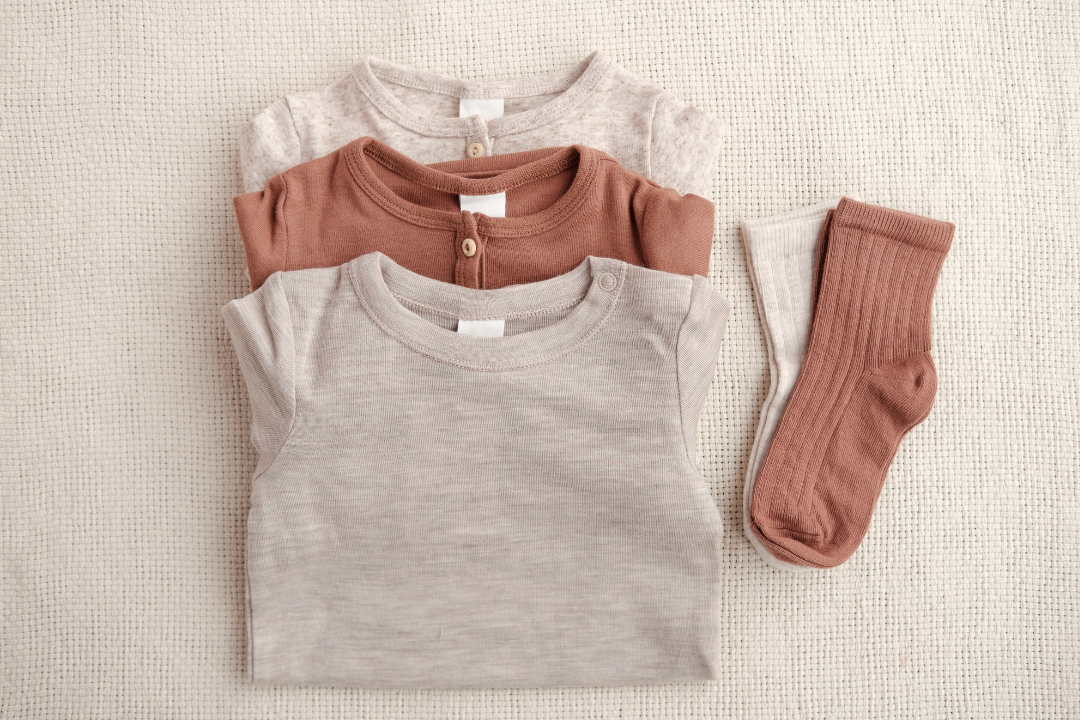
Tips for Choosing Safe and Non-Toxic Textiles for Baby Clothing
This is one of the first big questions new parents ask themselves, and it might be a bit overwhelming - trust me, I've been there! But, having four kids while working in the textile industry for over fifteen years learned me a few key points to look for.
When it comes to dressing our little ones, their safety and well-being are of utmost importance. Choosing safe and non-toxic textiles for baby clothing ensures that they are comfortable and protected from potential harmful substances. In this article, we will provide you with essential tips to help you make informed decisions when selecting textiles for your baby's wardrobe.
-
Opt for Organic Fabrics: Organic fabrics, such as organic cotton or bamboo, are an excellent choice for baby clothing. These textiles are grown without the use of harmful chemicals like pesticides or synthetic fertilizers. Organic fabrics are gentle on a baby's sensitive skin, reducing the risk of skin irritations and allergies. Look for certifications like Global Organic Textile Standard (GOTS) to ensure the authenticity of the organic claim.
-
Check for Oeko-Tex Certification: The Oeko-Tex Standard 100 certification guarantees that textiles have been tested for harmful substances. It ensures that baby clothing is free from substances like formaldehyde, lead, phthalates, and other harmful chemicals. Look for baby clothing with the Oeko-Tex certification label to ensure that they have undergone rigorous testing and meet strict safety standards.
-
Avoid Synthetic Fibers: Synthetic fibers, such as polyester or nylon, should be avoided for baby clothing. These fabrics are often treated with chemicals and may not be as breathable as natural fibers. Opt for natural fibers like cotton, bamboo, or linen, which are breathable, soft, and gentle on the skin. Natural fibers allow for better air circulation, reducing the risk of overheating and skin irritation.
-
Look for Low-Impact Dyes: Dyes used in textile manufacturing can contain harmful chemicals. Look for baby clothing that is dyed with low-impact or natural dyes. These dyes are made from plant-based or environmentally friendly sources and are free from toxic chemicals. They are less likely to cause skin sensitivities and are better for the environment.
-
Consider Pre-Washed Fabrics: Pre-washed fabrics have undergone a washing process before being made into clothing. This process helps to remove any residual chemicals, dyes, or finishes that may be present in the fabric. Choosing pre-washed textiles reduces the risk of exposing your baby to harmful substances and ensures that the clothing is softer and more comfortable to wear.
-
Research the Brand's Reputation: Before purchasing baby clothing, research the brand's reputation and commitment to safety and sustainability. Look for brands that prioritize transparency, provide information about their sourcing and manufacturing practices, and follow strict safety guidelines. Read reviews from other parents to gain insights into the brand's reliability and quality of their products.
Selecting safe and non-toxic textiles for baby clothing is essential for their health and well-being. By opting for organic fabrics, checking for certifications, avoiding synthetic fibers, considering low-impact dyes, and researching brand reputation, you can make informed choices to ensure your baby's clothing is both comfortable and free from harmful substances. Prioritizing safe textiles will provide peace of mind while dressing your little one.
Which is your most important criteria when choosing textiles for your baby? Let me know in comments below, I'd love to hear your best ideas!
//Karin